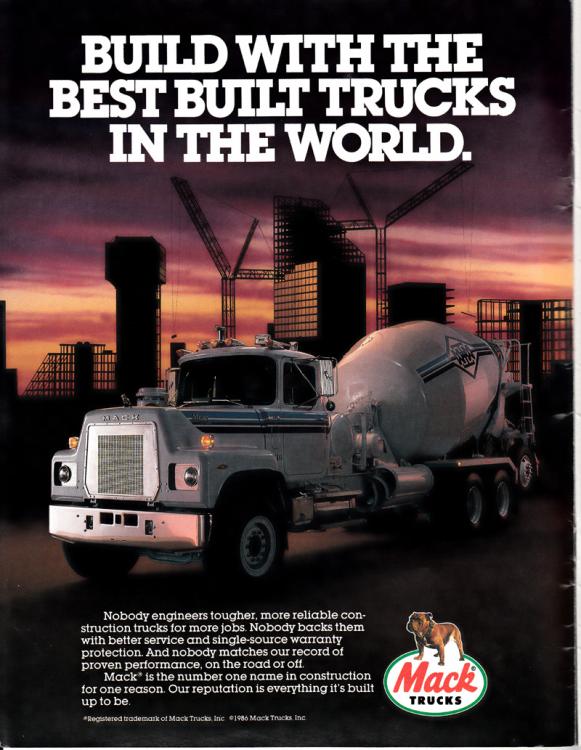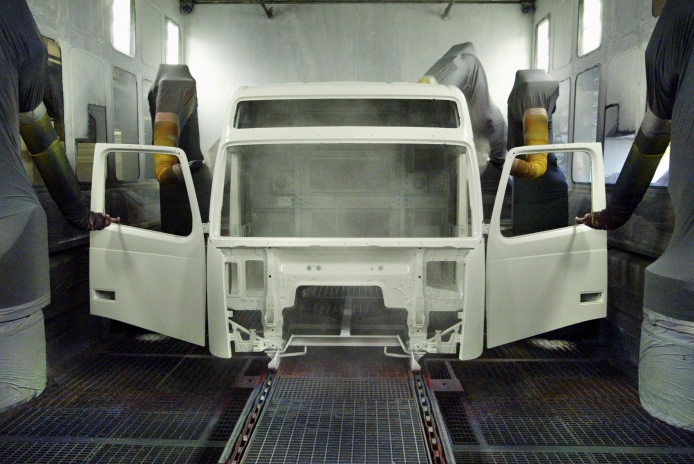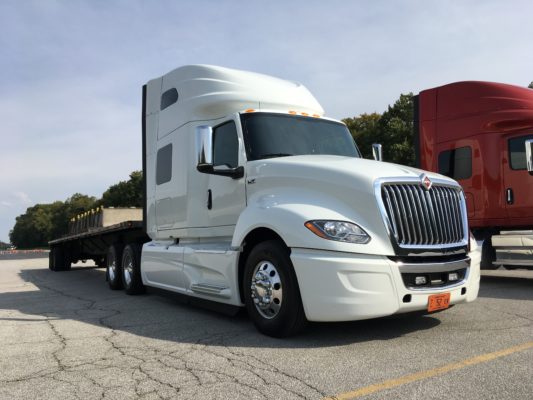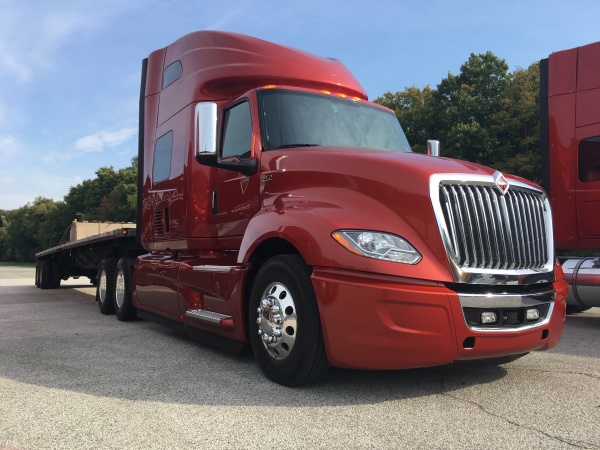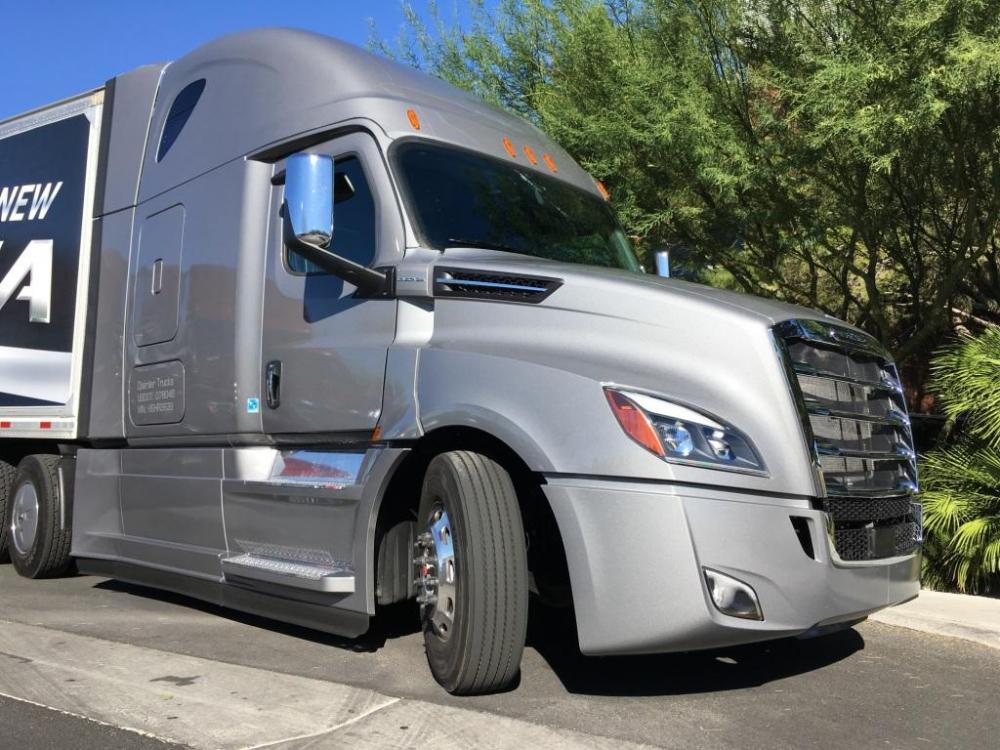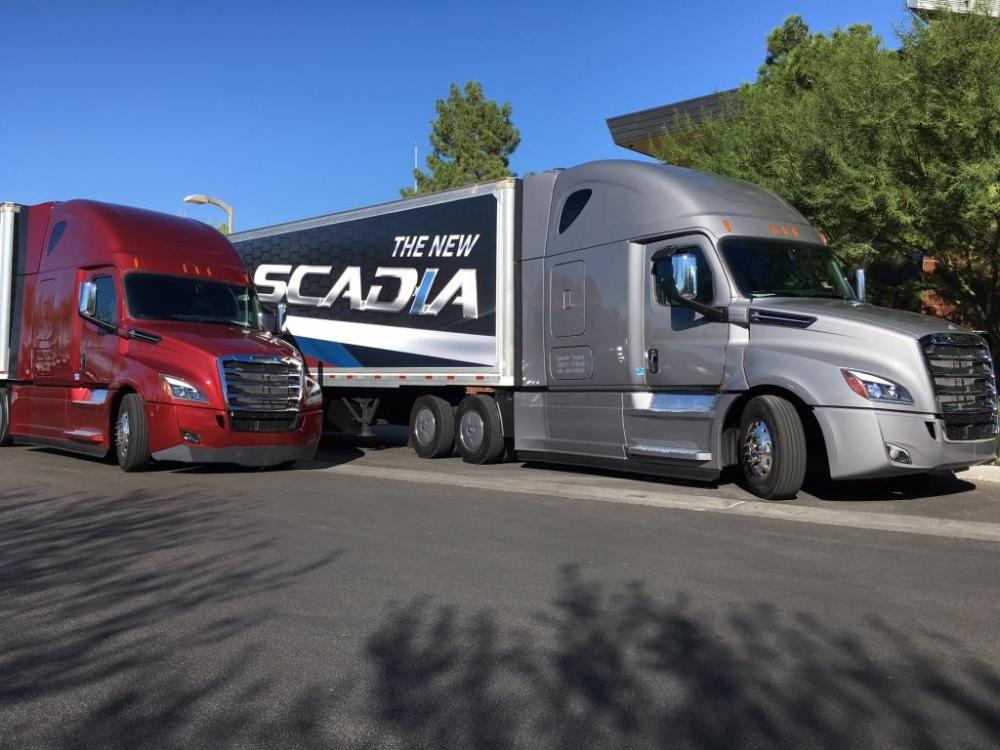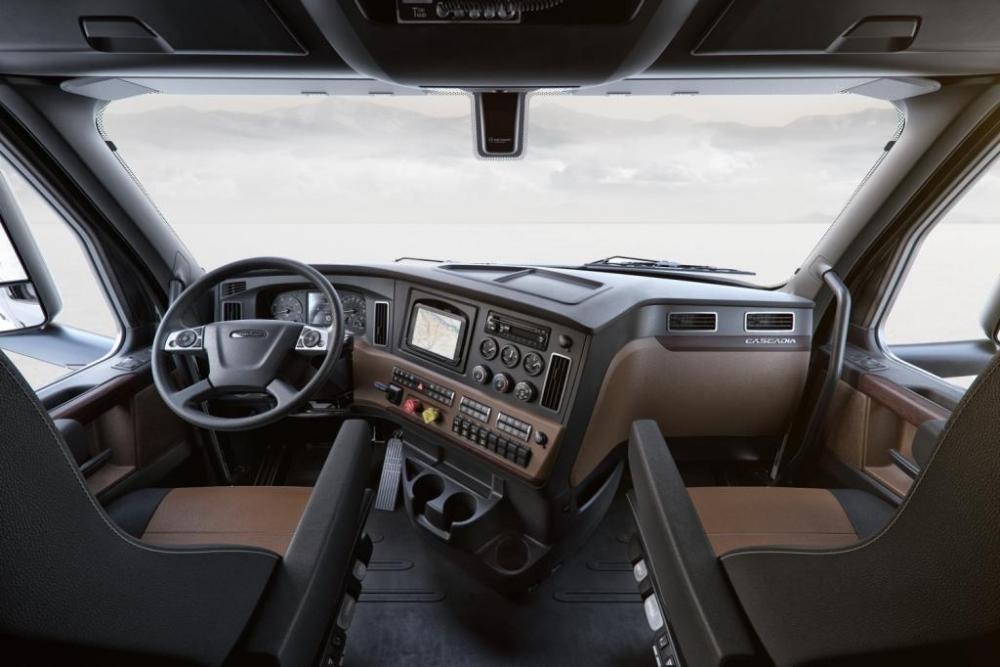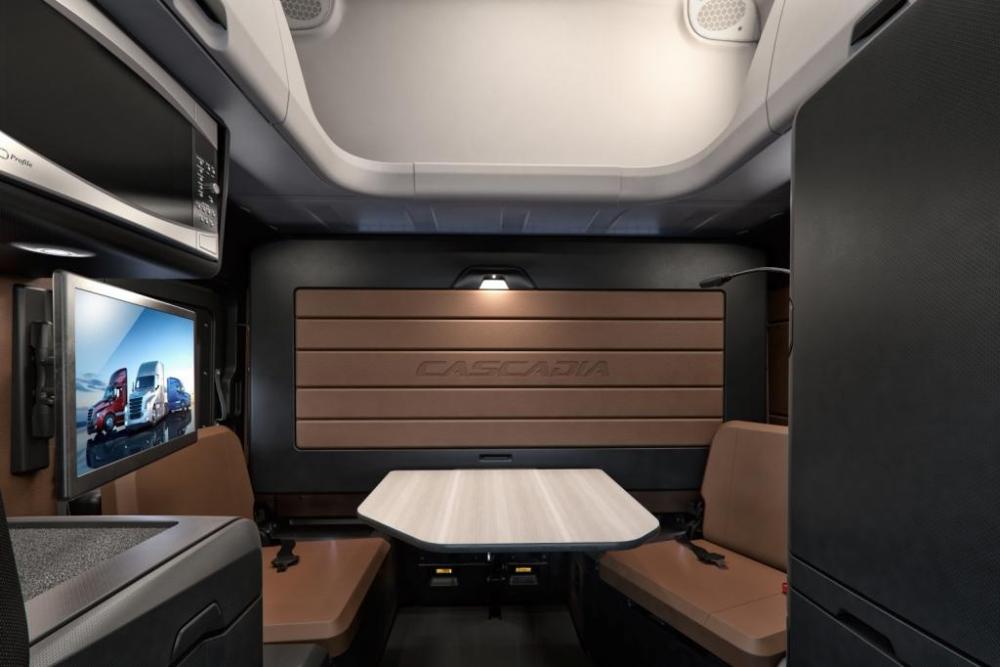
kscarbel2
Moderator-
Posts
18,855 -
Joined
-
Days Won
114
Content Type
Profiles
Forums
Gallery
Events
Blogs
BMT Wiki
Collections
Store
Everything posted by kscarbel2
-
Dagens Industri / October 18, 2016 AB Volvo is about to sell off a property portfolio worth three billion kronor in Gothenburg, Sweden. It would be one of the largest property deals ever in Gothenburg. The three properties, totaling 250.00 square meters in size, are located in the Torslanda, Save and Arnedal districts of Gothenburg. The real estate deal is expected to be announced shortly. Joakim Kendall, the acting head of the Volvo Group's media relations, refused to comment. It’s unclear which Volvo properties are for sale. In Torslanda, Volvo Group has its headquarters. At Landvetter airport in Save, Volvo owns an airplane hanger that houses its corporate aircraft and office. The airport is already in liquidation. Serneke Construction Group has acquired most of the property. The head office and R&D unit for Volvo Bus, as well as the Volvo Bus Experience Center, are located in Arnedal.
-
Scania Group Press Release / 18 October 2016 Faster gear changing, an even better interior, and a quiet and comfortable working environment. These are but a few comments from transport professionals after having tested Scania’s New Truck Generation. From September to the end of November, more than 9,100 drivers, transport company owners, and fleet managers from across Europe are invited to test Scania’s New Truck Generation. Invited guests test drive trucks in the new R- and S-series at the Scania DemoCentre. They will also learn more about how connected services can help transport companies achieve better profitability. An early sample of guests showed a real appreciation of the new driver environment and the advantages that connected services can bring to transport businesses. Judging by these early reactions, Scania’s New Truck Generation is already on the road to success. .
-
Great video. Keeping a human face on the business. I have a DAF heavy winter coat......best one I ever bought.
-
DAF Trucks Press Release / October 18, 2016 The new DAF Trucks merchandise collection is available right now! Take a look at www.dafshop.com to see the complete collection or visit your local DAF Trucks dealer. .
-
Freightliner introduces next-generation Cascadia
kscarbel2 replied to kscarbel2's topic in Trucking News
-
CBS News / October 18, 2016 America’s trucking industry is facing a severe driver shortage. One estimate says about 48,000 drivers are needed to move 70 percent of the nation’s goods. Companies are aggressively recruiting retirees. Drivers more than 65 years old make up about 10 percent of commercial vehicle operators in the U.S. A five month investigation by CBS News looks at how the increase in older drivers translates to potential danger on the nation’s highways. This trend is a result of the recent downturn in the economy, reports CBS News correspondent Kris Van Cleave. Individuals are working well past the retirement age of 65. But as the industry has changed, the rules of the roads have not kept up with the times -- raising the question: Is more screening needed for commercial drivers? It was supposed to be a celebration for the Hooks family, driving from Oklahoma City to St. Louis in the summer of 2009 to see Ronnie become an elder at his church. But on I-44 near the state line, traffic slowed to a crawl. “I was on the phone with them when it happened on that day, and the phone just went dead,” Ronnie said. The semi driven by 76-year-old Donald Creed rolled on top of three cars, killing 10, including Hooks’ parents and two brothers. On Aug. 19 in Newark, New Jersey, a bus was T-boned by another N.J. Transit bus driven by a 70-year-old. Two people died. Days later, on Aug. 25, a truck hauling stones driven by a 74-year-old slammed into traffic in a construction zone in Binghamton, New York. Ten were hurt. A CBS News analysis of crash data reveals a 19 percent increase in accidents involving commercial truck and bus drivers in their 70s, 80s and even 90s, in just the last three years. From 2013 to 2015, there were more than 6,636 involving elderly drivers in 12 states alone. Oklahoma Highway Patrol Lt. James Loftis investigated the collision that tore apart the Hooks family. As head of the accident investigation unit, he’s noticed an increasing number of crashes involving older commercial drivers. “The industry is looking for truck drivers. There’s a shortage in truck drivers. So they’re not going to self-regulate. The only way that that could be done is on the federal level,” Loftis said. Rose McMurray was senior executive at the National Highway Transportation Safety Administration in the ‘90s. That’s when the agency, recognizing reaction time and stamina become compromised with age, considered implementing regular skills tests for older commercial drivers. “It clearly can result in a lot of political backlash… so state governments have grappled with this, the federal government has grappled with this...because the age discrimination laws really intervene,” McMurray said. The initiative was shelved because of the labor shortage and a lack of age restrictions. Trucking schools are now actively recruiting seniors, promising good benefits and money to supplement retirement. We hired a 70-year-old former Texas state trooper and sent him with a hidden camera to Roadmaster, a school recruiting retirees. “Is there an age limit or anything on this?” he asked the recruiter. “There is not,” the recruiter said. “Trucking is just -- it’s a different kind of industry and environment. They like women any age, men of any age. As long as you are physically able to get behind that wheel and drive that truck,” the recruiter added. “We had two ladies, they were probably in their 80s.” The company defended its policy. Dusty Cushard is the director of their Pennsylvania school. He says FMCSA, the agency regulating the trucking industry, does not prohibit training older drivers, and it’s against federal law to discriminate based on age. “I follow the FMCSA guidelines… There’s no age on it. They pass the physical and everything, and they want to drive,” Cushard said. FMCSA deputy administrator Daphne Jefferson acknowledges the increase in older commercial drivers. Her agency is now studying the trend. “We are not quite at the point yet where we are ready to say one way or another if there needs to be a change in driver rules for, say, drivers over 65,” Jefferson said. But Washington’s deliberations come too late for the Hooks family. “We have all had to learn how to deal with it and deal with the recurring memories and the pain of not having them,” Ronnie said. The driver of the truck that killed the Hooks family was charged with negligent homicide. The aviation industry is also facing a shortage of pilots, but it has a mandatory retirement age of 65. An association representing independent truck drivers said, while there are more commercial drivers over 70, “the greater majority of truck-related crashes are not caused by truckers, but are instead caused by other drivers.” Video - http://www.cbsnews.com/videos/highway-crashes-involving-older-truck-drivers-increase/
-
Digging into the new diesel engine oils: Part two Fleet Owner / October 18, 2016 Creating new engine tests turned out to be one of the more challenging aspects of establishing a new diesel engine oil category. Dan Arcy, the global OEM technical manager for the Americas for Shell Lubricants, that out of the three “phases” within the Proposed Category 11 or “PC-11” five-year development process that will result in the new CK-4 and FA-4 diesel engine motor oils on Dec. 1, the second phase proved to be the hardest and longest. Starting in December 2011 and lasting until February 2016, the second phase of the PC-11 development process entailed the development of brand-new engine tests as well as the retirement of others. “We knew we needed to look at three main areas of [oil] classification testing: oxidation control, aeration control, and shear stability,” he explained to Fleet Owner, and that entailed a lot of research. “We looked at seven different tests for oxidation control alone,” Arcy pointed out, referencing the nine-member heavy-duty engine oil classification panel made up of engine manufacturer, chemical company, and oil marketer representatives who served under the auspices of the former American Society for Testing and Materials, now known as ASTM International. Yet the work didn’t end when certain tests were selected by the panel, he stressed, for then they had to prove that results from the chosen test could be “repeatable” regardless of the laboratory used. “Using the same oil in the same test needed to give us the same result, Arcy explained. For example, in the case of the Volvo T-13 test selected to confirm oxidation control for PC-11 oils, it took “a couple of years” to get it established. He noted that PC-11’s “phase two” work was largely completed by Dec. 2015, yet awaited a “final approval meeting” two months later with the American Petroleum Institute (API) to officially “sign off” on the testing results and classification standards. With that final “seal of approval” in hand, the third and last phase of the PC-11 process began; one that ends Dec. 1 this year – the licensing and introduction of the new CK-4 and FA-4 blends to the market. “There have been lots of little steps along the way” of phase three, Arcy emphasized, which includes labeling designs to help ensure customers pick the right oil for their engine. “The product [PC-11] line is set to introduce new package labeling, bottle color and user friendly symbols to help customers choose with confidence and understand the enhanced benefits such as extended drain intervals, higher fuel economy or extreme temperature use they will receive,” noted Brian Humphrey, OEM technical liaison for Petro-Canada Lubricants. “The API has released new service symbol ‘donuts’ which clearly distinguish between the two sub-categories,” he added. “However, oil marketers are allowed to use any color they choose for the donut itself. So we recommend visiting http://www.api.org/ to familiarize yourself with the different symbols before the Dec. 1 launch.” Jeff Torkelson, technical director of engineering tech services with Valvoline, stressed that for the truck or fleet owner, the decision to use CK-4 or FA-4 will have to start with their OEM recommendations. “Some OEM’s will be recommending FA-4 for their new 2017 engines and some will not, so it’s important to pay close attention to your owner’s manual,” he emphasized to Fleet Owner. “Duty cycles may also play a role in selecting the correct category of lubricant, where severe service duty cycles are more likely to recommend using CK-4 oils versus FA-4.” For fleets desiring to get every bit of fuel efficiency they can and if the OEM recommends FA-4 for their engine, then using it should result in improved fuel savings, Torkelson noted. “Even with CK-4 backwards compatible oils, the 10W-30 grade should provide improved fuel efficiency compared to the 15W-40 grade,” he emphasized. “So for those looking for the best protection and durability, we recommend CK-4.” While oil drain intervals will be set by the engine OEMs, Valvoline is expecting longer drain intervals for both CK-4 and FA-4. In fact, PACCAR is one such OEM that confirmed earlier this month that it will be extending oil drain intervals by 15,000 miles for its proprietary engine line. “The increased robustness of the PC-11 oils could potentially allow longer drains,” Torkelson said. “The PC-11 category overall shows increased performance in oxidation protection, [plus] shear stability or stay-in-grade performance which could potentially result in longer drain intervals [and] reduced maintenance costs.” He added that Valvoline has been working “diligently” on field testing PC-11 oil since the category need was announced and has been running longer and longer drain intervals with each prototype improvement. Those longer drains are the result of several factors, noted Shell’s Arcy, with the two main ones being less contamination of the oil and longer-lasting chemical additive packages. “In terms of how far an oil can go, the viscosity or the ‘thinness’ of the oil does not make a difference,” he stressed. “A thicker CJ-4 15W-40 oil and FA-4 10W-30 oil could have the exact same [drain] interval. That’s because the [new] oils are designed to handle higher temperatures better and longer than [previous] oils and offer significantly better oxidation control.” Like all the lubricant makers, Shell invested heavily in field tests for the new PC-11 oils – some 45 million miles worth across numerous truck duty cycles and engine displacements – which when added to the field tests conducted by the OEMs should give motor carriers “peace of mind” that the new oils perform as advertised. “That’s a lot of miles and should give customers an extra sense of comfort,” Arcy said. “Because we all know customers won’t sacrifice durability for fuel economy.” Knowing, however, that fleets often like to do their own validation tests, he offered a few suggestions: Use three to five trucks to get a good “statistical sampling” of your fleet’s operating characteristics; Use trucks with comparable load, route, and fuel economy characteristics; Use an oil analysis program; Conduct oil analysis tests on at least “a couple” or oil drains per truck, with each drain at anywhere from 40,000 to 60,000 miles.
-
Camelback vs. Inverted Camelback
kscarbel2 replied to RoadwayR's topic in Antique and Classic Mack Trucks General Discussion
Inverted camelback rode like a Cadillac. Camelback lasts longer. -
VW Seeks Final Approval of Emissions Deal Without Fix in Hand Bloomberg / October 18, 2016 Volkswagen AG is asking for a final sign-off on its $14.7 billion settlement with drivers as it continues to seek regulators’ approval of a fix for 482,000 pollution-spewing vehicles still on U.S. roads. Without an approved repair, VW may be left with only one option: buy back the cars with so-called defeat devices from the owners. And the German automaker might have to do the same for a smaller group of vehicles with larger 3.0-liter diesel engines equipped with the emissions-cheating software. VW reached the settlement covering the 2.0-liter engines in June with consumers and regulators including the U.S. Environmental Protection Agency. With a San Francisco federal judge set to consider final approval of that deal Tuesday, the EPA has yet to approve any of VW’s proposals to fix those cars, said a person familiar with the matter who wasn’t authorized to speak publicly. A formal proposal by VW for a fix won’t be considered by federal regulators in an official review until after the settlement is approved by the judge. VW’s negotiations with the EPA have been fluid, said the person who asked not to be identified. So far, regulators led by the California Air Resources Board have been critical of the carmakers’ attempted solutions. CARB has twice rejected VW’s recall plans -- once in a January letter related to the 2-liter engines and again in a similar July statement for the 3-liter models. VW has agreed to spend as much as $10 billion to buy back 2-liter models and compensate drivers. It also agreed to pay $2.7 billion to federal and California regulators to fund pollution-reduction projects and pay $2 billion to be invested in clean technology. A court conference is set for Nov. 3 on VW’s negotiations with regulators and consumer lawyers on a solution for the 85,000 vehicles with 3-liter engines, including the VW Touareg, Porsche Cayenne and Audi Q5. The automaker has earmarked almost $19.6 billion (17.8 billion euros) to extricate it from the emissions-cheating scandal. That includes $1.2 billion to its U.S. franchise dealers, along with $86 million to California and $603 million to other states over violations of consumer protection laws. VW still faces criminal probes, shareholder claims and environmental lawsuits by multiple states as well as lawsuits and a criminal probe in Europe. U.S. District Judge Charles Breyer allowed the settlement to move ahead in July, calling the proposed agreement “fair, adequate and reasonable.’’ At Tuesday’s hearing to determine whether the agreement is fair, Breyer is set to consider objections on behalf of more than 400 car owners. Breyer has allotted no more than two minutes for arguments to each of the critics. Car owners could have gotten the same deal -- buybacks and compensation -- through VW’s settlement with federal regulators, according to the Center for Class Action Fairness, an advocacy group primarily complaining about the estimate of more than $300 million in fees to be paid plaintiffs’ lawyers. The Center also said the announced value of the settlement was inflated. Consumer lawyers were essential to the quick settlement, they argued in court filings last month. Attorneys’ fees will be limited to $324 million, far below the typical share in class-action settlements. The case is In Re: Volkswagen “Clean Diesel” Marketing, Sales Practices and Products Liability Litigation, 15-md-02672, U.S. District Court, Northern District of California (San Francisco).
-
Big Rigs / October 18, 2016 Next year's Perth Truck and Trailer Show has been postponed until 2018. Motor Trade Association (MTA) of Western Australia CEO Steve Moir said it was a decision made in light of WA's current economic climate and would allow time to reinvigorate the show meaning it will be "significantly bigger and better". Mr Moir said the Western Australia economy had slowed and this decision would help ensure the show continued to "grow strongly". Up until last year the truck show was held at the Perth convention centre, now the MTA is looking at an outdoor facility giving more space for displays. "We're looking at interactive displays," Mr Moir said which would "attract the broader public". "We're pretty excited." The Perth Truck and Trailer Show will continue to be held every two years, dates for 2018 are to be confirmed.
-
The Australian Trucking Association talks brakes
kscarbel2 replied to kscarbel2's topic in Trucking News
ATA discusses electronic braking technologies Steve Skinner, Australasian Transport News (ATN) / October 17, 2016 Electronic braking systems are now generally regarded as a great thing, but there can be problems if truck and trailer systems aren’t properly matched Chris Loose is a pretty funny bloke for a truck engineer. His definition of a truck driver is someone who transports stuff you can’t. And an engineer is an organism who solves a problem you didn’t know you had in a way you don’t understand. And everybody can relate to what he calls the "bum-ometer". "The bum-ometer is no longer calibrated to the road," laments Loose, senior engineering advisor with the Australian Trucking Association. "The trucks now have air suspension seats, they have air suspended cabs, they’ve got huge taper leaf springs and air bag suspension. "The driver is no longer connected to the road so he no longer feels it. "The driver is becoming more and more remote from his vehicle and the feel of the road. "He is inherently as a result driving harder and faster through potholes because he no longer feels them, and it’s a huge issue. "Unfortunately guys, it’s a male problem, testosterone, we want to get there faster." And for Loose that’s one of the reasons why electronic roll stability is such an important thing. Roll stability is part and parcel of the electronic braking systems (EBS) that have become more common in recent years. Loose gave an entertaining rundown on electronic braking and stability technology at this year’s Comvec technical conference in Melbourne, organised by Heavy Vehicle Industry Australia. Life saver As far as the ATA is concerned, the jury is no longer out on electronic stability control (ESC): it’s a great and proven life-saving technology. ESC automatically slows the vehicle down via both the throttle and brakes if it senses the risk of a rollover. The ATA points to a Monash University Accident Research Centre study from a couple of years ago which concluded that mandated ESC in heavy vehicles could reduce fatal heavy vehicle crashes by 4 per cent. In turn, ESC can be the foundation technology for the even more advanced Autonomous Emergency Braking Systems (AEBS) that we’ve heard so much about for both cars and trucks in recent years. Monash estimates mandated AEBS could prevent up to an incredible 25 per cent of fatal heavy vehicle crashes. Meanwhile the Victorian Government says log truck and trailer rollovers have been virtually eliminated thanks to stability control on B-doubles in key logging areas of that state. That’s from an average of 40 rollovers a year previously. The ATA is advocating that for most applications, electronic stability control should be compulsory in all new truck and trailer models from 2019. As things stand, the lesser technology of ABS – anti-lock braking – is mandatory on all new trucks and trailers. This is under the Australian Design Rules 35/04 (trucks) and ADR 38/04 (trailers, with load sensing valves as an alternative.) Loose doesn’t agree with it, but dollies are exempt from ABS or load sensing valves. However "through" power must be provided to the following trailer. In the US and Europe most trailers have ABS; here most trailers don’t. Ironically, there may be a safety problem with the latest technology, if there is incompatibility between truck and trailer braking systems. If the truck has a "smart" brake system with ABS and better still EBS as well, and the trailer or trailers are "dumb", that can create a safety issue in itself. The most obvious example is stamping on the brakes in an emergency: the trailers may not stop as well as the truck, thereby risking a jack-knife situation. . -
Keeping brakes compatible Steve Skinner, Australasian Transport News (ATN) / October 18, 2016 There will soon be plenty of guidance for getting the best out of not only foundation brakes, but the much more complicated electronic systems as well Chris Loose reckons English is a second language for a lot of engineers. And that’s why Loose and numerous other technical experts who have been working on a guide to braking and stability performance for heavy combinations, are trying to keep it simple. "We don’t want to overcomplicate it," says Loose, senior engineering advisor with the Australian Trucking Association (ATA). "Every operator who tries to read an engineering book won’t go past the title. "We made it is as easy to understand as possible. An operator will focus on three key tables, and that’s probably all he’s going to have time for" Those three tables are in the draft document which still needs real-world testing by operators. The tables involve ratings across four classes of brake systems and three types of braking conditions. The first class of brake system is what are called "dumb" brake systems, which are air only. The second type is load sensing valve brake systems, which are mechanical and air. The third is anti-lock brake system (ABS); and the fourth – and smartest – is electronic stability control. These systems are rated against light or "normal" braking; heavy or "harsh" braking; and cornering or roll stability. Smart truck and dumb trailers The truck might have stability control, and the trailer might have TEBS (trailer electronic braking system) with roll stability, which would give the combination the top rating for both braking and roll stability. But if the operator doesn’t plug in the power, it’s a dumb trailer. Loose adds that with longer combinations you have to make sure the power goes right down to the back end -- at least 9 or 10 volts at the last control unit. "Without electrical grunt it’s (also) a dumb trailer." And don’t try to stick a 24 volt lead into a 12 volt ABS system: "That will blow it up." The tables apply equally to trailers attached by both fifth wheels or drawbars. However truck and dogs are inherently more unstable than semitrailers or B doubles. Semis are connected by the fifth wheel, and are therefore roll-coupled. "A truck and trailer will tend to roll together," says Loose. "There is a link, so stability system on one of those units will help understand what’s going on with the other unit. "With drawbar units though, between a dog trailer and a rigid or another trailer, they’re not roll-coupled, so one can roll independently of the other." Loose adds that there are lots of different warning signs that there’s a brake compatibility problem, for example uneven brake wear; different brake temperatures; and wear on the kingpin. Solid foundations Chris Loose says fleets should try and standardise their brake technologies, because they are often mixing and matching trucks and trailers. That advice applies both to the electronic overlay systems as well as the foundation brake systems themselves. Re foundation brakes: "If you have got disc brakes on the truck, put disc brakes on the trailer. Get the foundations to match. It just makes life easier." While on the subject of foundation brakes, the ATA has just released a 15-page technical advisory procedure on slack adjuster setup and compliance to the new National Heavy Vehicle Inspection Manual. Meanwhile in May the ATA released the second edition of its 24-page technical advisory on ESC and the similar RSC (roll stability control). .
-
Prime Mover Magazine / October 18, 2016 The 24th annual Newcastle Road Transport Awareness Day will be held this Saturday 22 October under the new name of Newcastle Hunter Truck Show. The newly rebranded truck show will also move from its former home in Newcastle to the Maitland Showgrounds to allow a 'much larger truck show', including a parade that is expected to attract more than 100 prime movers. Road Transport Awareness Group Chairman, Pete Black, said that the event would be much bigger than previous years due to the support of the truck and transport industry. "A new committee has continued to reinvigorated the event to accommodate increased interest from the industry and the community with lots more entertainment, food and importantly one of the country’s most extensive collection of trucks on show," Black said. The event was established in 1992 as a way for the local road transport sector to raise awareness of its work while encouraging safer driving on our roads. The event supports the work of the Westpac Rescue Helicopter Service and has raised more than $1.3 million dollars in the past 24 years.
-
Kraz Trucks Press Release / October 10, 2016 A new non-standard 4x4 model has been added to the KrAZ range of heavy armored off-road militaryvehicles. Utilizing an all-new design architecture, the “Hulk” joins our existing line-up of mine-resistant ambush-protected (MRAP) vehicles including the Hurricane, Shrek and Fiona. The Hulk is based on the KrAZ-5233 off-road platform utilized by the Shrek. The difference between Hulk and Shrek is the absence of a conventional frame. All the components are attached directly to the monocoque construction body. As a result, the truck’s GVW has been reduced to 16 tonnes (from the Shrek’s 18 tonnes). Also, the truck’s overall height and access heights have been reduced too, which improves ergonomics and performance. The body’s V-shaped “hull” helps to deflect upward directed blast. Ballistic protection meets STANAG 4569 level 2. Armor plates stops penetration of bullet emitted from any shooting angle. Moreover, bullet penetration after ricochet has been minimized. Mine protection meets STANAG 4569 level 2а and 2b: landmine explosion (6 kg of TNT) under any wheel or bottom. All glass is laminated and bulletproof, and the inner layer is made of double polycarbonate. A powerful 310 horsepower turbocharged diesel engine can propel the Hulk at speeds up to 90 km/h, and ensures high performance at extreme temperatures ranging from - 45 to + 450C. A manual 9-speed transmission easily adapts the vehicle to specific operating conditions. The Hulk can accommodate up to 12 fully equipped soldiers. The Hulk is multi-role armored off-road MRАP vehicle used for carrying personnel, various cargoes and equipment over all kinds of terrain. It can provide fire support with advanced weaponry, and features both active and passive protective countermeasures. .
-
1987 Mack RS-688LST
kscarbel2 replied to j hancock's topic in Antique and Classic Mack Trucks General Discussion
The dealer body was so upset over the end of RS-RL Value-Liner production that we introduced an all-new variant of the new RD called the "Western Contractor" which initially had a Value-Liner like grille. . -
1987 Mack RS-688LST
kscarbel2 replied to j hancock's topic in Antique and Classic Mack Trucks General Discussion
-
Dagens Industri / October 17, 2016 Late on Friday, Volvo Group's Board of Directors announced a decision to make a large 435 million kronor investment in the cab factory in Umeå. The money will go towards upgrades in paint processes, including a new surface treatment line involving pre-treatment and electrostatic drop. But despite the large investment, no new jobs will be created at Volvo's Umeå cab plant as a result of the investment. Volvo’s Umeå cab plant employs 1,450 people. An existing building, which houses offices and locker rooms, will be demolished and replaces with a new 3,000 square meter structure. At the press conference, Volvo representatives said the investment will focus on environmentally friendly and advanced technology. The process will be carbon neutral, and the use of renewable fuels instead of fossil. .
-
Truck journalist test drive new International LT
kscarbel2 replied to kscarbel2's topic in Trucking News
Driving the International LT Truck News / October 17, 2016 Navistar’s DriverFirst philosophy shines through with design of the new International LT International recently offered the first driving opportunities of its new LT-series Class 8 highway tractor, which will supplant the popular ProStar. Drivers played a big role in the design of the new truck. International sought the opinions of hundreds of professional drivers and evidence of their feedback can be seen throughout the cab. The air horn lanyard has been restored and put back where it belongs in the upper left corner and the air brake releases have been moved further from the driver so they don’t encumber movement into the sleeper. “The only time you touch those is when the truck is stopped, so there is no reason to occupy the primary real estate on the panel with those releases,” explained Jeff Sass, senior vice-president of sales and marketing with Navistar. “Everything we are doing today is based around the driver.” The instrument panel is cleaner and better designed. Virtual gauges are shown on a vibrant driver display. Improvements to functionality are found throughout the cab. Ample USB and 12-volt outlets keep drivers connected. A deep ledge along the dash provides useful storage for phones, pens and other small items. The HVAC system – a source of complaints on the ProStar – has been completely redesigned and its reliability improved. “We have dramatically improved the efficiency of the HVAC system,” said Joe Werth, vice-president, new product development. “It is 40% more efficient in terms of speed to defrost the window.” Sightlines have also been improved. The vent window has been eliminated to offer greater visibility out the sides. Werth said the LT boasts 15% better visibility out the passenger side window and a 5% improvement out the left. Forward visibility is better as well thanks to a new, one-piece curved windshield and a redesigned hood. Better door seals reduce interior noise. I drove an LT 625 with the new Cummins X15 engine rated at 450 hp. Drives were limited to a few laps around Navistar’s three-mile test track but the truck drove nicely, was quiet and comfortable. The shifter and engine brake have been integrated on the right side of the steering column for easy access. The most frequently used buttons and switches have been moved closer to the driver. “The focus was to bring closer to the driver the things that were important to them,” said Werth. The redesign did not extend to the sleeper, which is a direct carryover from the ProStar. Serviceability, however, was improved thanks to new routing and clipping and easier access to the fuse panel inside the cab. While the LT was designed with drivers in mind, its owners will be equally happy with the upgrades. International is touting a 7% fuel economy improvement over its most efficient ProStar ES model. This comes from a combination of improved aero, 3%, and powertrain enhancements which count for 4%. Aerodynamic improvements include a reshaped hood and bumper and more slippery mirrors as well as the redesigned windshield. “We looked at how the bumper was structured, how air flowed under and over the hood area and improved the shape of that to accommodate aerodynamics,” Werth explained. Engine improvements came in the form of calibration activities and the reduction of parasitic losses. Werth said both Cummins and Navistar N-series engines will deliver the same fuel economy gains over previous models. The Diamond level interior with black cherry panels in the truck I drove was handsome. But Navistar officials were quick to point out drivers didn’t want a truck that felt like a car, despite the trend towards more automotive-inspired interiors. “We have introduced features to make this vehicle easier to drive and more capable of supporting a less experienced driver to be able to come in and operate this vehicle effectively,” Werth explained. “It brings in more automotive familiarity, however the robustness of the design allows for operations with gloves, that kind of thing. It’s a balance. The issue of driver retention was probably one of the primary drivers for us in how we brought the design in. You do get some of those automotive features as a result, but where we tried to make the difference was in the robustness of the dials, how the driver interacts with them, – can you grab them with gloves on in the winter? – the size of the toggle switches. Those were all designed to accommodate a truck driver.” Sass said feedback from fleets emphasized the truck had to be a vehicle drivers were happy with. “Driver retention equals cost of ownership,” Sass said. Denny Mooney, chief engineer, added “We have fleets, big fleets, whose CEOs tell us that if drivers don’t want to drive your truck, we’re not buying your truck. These are fleets that have multiple brands and are having a tough time attracting drivers. It sounds simple but if your truck is sitting there and drivers don’t want to drive your truck, they’re not buying your truck.” To win the hearts of drivers, Navistar realized uptime was critical. “We are trying to get our truck to be every bit as reliable as any automobile is today,” Mooney said. The LT series is supported by OnCommand Connection, Navistar’s open architecture remote diagnostics platform. It provides vehicle health reports and advises customers on the most appropriate action when fault codes appear. Navistar is also offering over-the-air engine updates, allowing customers to keep their software updated without taking the truck off the road. “When I think about uptime, it’s about reliability and durability, making sure the truck never has to come in unless it’s for scheduled maintenance,” Mooney said. So far, the LT has been well received. Sass said more than 3,000 orders have been received. Navistar is in the process of revitalizing its entire product line. The first of these new models to be unveiled, the LT, is a comprehensive upgrade over the ProStar. Drivers will find it quieter, more ergonomic and comfortable to operate and will enjoy better visibility. Less reaching and straining will be required. The ProStar served International well but drivers won’t be asking for their ProStars back once they’ve driven the new LT. . -
B Model muffler heat shield
kscarbel2 replied to richard-b61's topic in Antique and Classic Mack Trucks General Discussion
If you purchase a 13ME2120P1, that one is exactly like the original......it's the original part number. -
I'm confident that you and I share a lot of thoughts. My observation is that the costs of living, the costs of doing business, have risen faster than our incomes have risen. We've actually been in this trend for decades, and shrugged it off for years. But now, we're reaching the break-even point. And, upon reaching this point after working so hard for decades, we're quite frankly bitter about it, and rightly so! Many people still coming here from overseas are doing so because of an information lag. They're unaware that things here are not as rosy as they used to be, as you pointed out. The rest, well, any western developed country is still better than where they're from. I posted the Mahrer interview because he presented some valid points. Everyone is going to have some thoughts you agree with, and some you don't. From day one, I've disagreed with the notion of having a president beginning office at age 70 (Trump is 70, Hillary 69 next Wednesday). The job is literally 24/7, and consider the mental and physical demands of the job (And nobody should be in Congress beyond age 70). Based on what information we are told, perhaps 15% of it being complete and accurate, neither nominee is a high caliber individual with integrity who is capable of uniting the vast majority of the American people behind a well crafted plan for resolving our domestic issues, regaining respect, trust and thus stature around the world so as to restore global stability, and take us successfully into the future. We can't have half of the American people sitting out the game. Only when 90+ percent are in, can we achieve success. A true presidential individual brings the people of America together, rather than dividing them (e.g. Teddy Roosevelt, FDR). We're in a real mess, there's no beating around the bush. Even in a best case scenario, it would take a superb individual and an element of luck to get us back on the right track. I completely agree that we need a massive course change. But we need a president. I personally don't feel that either one of these colorful individuals are presidential material.
-
Freightliner introduces next-generation Cascadia
kscarbel2 replied to kscarbel2's topic in Trucking News
Driving the new Cascadia Truck News / October 17, 2016 New Freightliner Cascadia is a technology-loaded luxury truck It takes some courage to take the industry’s best-selling truck and to completely reinvent it, but that’s exactly what Freightliner has done with its new Cascadia. The new Cascadia has been in development since late 2011, an unusually long production cycle, giving the company the opportunity to conduct extensive field testing and to ensure a smooth rollout. I recently had the opportunity to drive two new Cascadias and they performed exceptionally well on a nearly three-hour drive from Las Vegas into California and back. Both trucks, despite being pre-production units, were dialed in and provided a superb driving experience. This is a completely new truck, not just a product update. It has been redesigned top to bottom, inside and out. Let’s start with the exterior. Freightliner is promising an 8% fuel economy improvement over its Cascadia Evolution, and about half of that is due to aerodynamic enhancements. The AeroX package features a low clearance air dam, drive wheel fairings and long flex extenders along the rear of the cab. Both the Aero and AeroX packages feature more aerodynamic mirrors and door seals. The remaining fuel economy gain comes from the integrated Detroit powertrain; the DD15 engine, DT12 automated manual transmission and Detroit rear axles all received improvements. The new Cascadia is more modern and distinctive looking than its predecessor. It seems to have borrowed some design cues from Freightliner’s autonomous Inspiration Truck, but in reality, it was the other way around. The new Cascadia was already in development and so, unbeknownst to us at the time, the Inspiration Truck actually offered a hint of what was to come in the new Cascadia. “There are definitely a lot of things we were developing for the new Cascadia that went into the making of the Inspiration Truck,” confirmed Toby Faulkner, director, new Cascadia development. “They were really built off each other. The styling you see on the new Cascadia inspired the Inspiration Truck but the technology we were developing for the Inspiration Truck we were able to put into the new Cascadia.” The new Cascadia will improve a driver’s life. The sleeper has been completely redesigned to make better use of space. With the trucking industry’s focus on health and wellness, Freightliner designers added a larger fridge with a surface area that can be used for food prep or cooking equipment. In consultations with drivers, it was discovered that the upper bunk isn’t often used for sleeping – it’s normally used for storage. So designers built into the new sleeper proper storage around the perimeter of the ceiling with tie-downs that can be used to secure duffel bags or storage bins. This opens up headroom and gives an open, loft-type space, not to mention loads of extra storage. “We really focused on driver comfort and smart storage; rethinking how we do everything,” explained Faulkner. “How can we make it like a small studio apartment?” With the lower bunk folded up, two seats and a table provide a comfortable and functional dining area. “The other feedback we got, was this feeling that the truck was like a cave and when you turned the lights on they were too bright,” Faulkner explained. Freightliner’s answer to this was to install dimmable LED lighting in the ceiling, which provides a more natural, indirect glow. Brighter dome lights are also available when more light is needed. This attention to detail carries to the front of the truck. The instrument panel is cleaner and more logically laid out. Electrical switches are along the upper row and air switches below. “It’s very intuitive about what you need to find and easy to find them when you need them,” Faulkner reasoned. Above those is an area that can be used to install whatever telematics device the customer is using. “We’ve allowed for the easy integration of the display without having to go through a lot of rework or tearing up of the dash,” Faulkner explained. One of the biggest upgrades is the driver display, which through the use of vibrant colors makes it easy to find at a glance the information you are looking for. There’s a ton of information packed into this display, including everything that pertains to the Detroit Assurance 4.0 suite of active safety systems. No longer is a separate monitor required on the B-panel to display details such as following distance. Visibility out of the new Cascadia has gotten better. The mirrors were moved slightly to accomplish this and a one-piece windshield and side windows allow a better view of the space around the truck. Out on the highway, the truck performed spectacularly on a route that took us south on US Route 95 to Searchlight, Nevada, west along 164 – some good grades along this section – and then back to Vegas on I-15. The 400-hp, 1,750 lb.-ft. rated DD15 pulled the grades better than you’d think possible from just 400 horses. More fleets are spec’ing their engines this way, Faulkner explained. “We found it gets you up the grade fuel efficiently and in a good amount of time and when you’re not climbing a grade, it’s the right amount of power,” he said. “It’s the sweet mix between horsepower and torque. This is our fleet rating.” I spent the majority of the time in cruise control and was pleasantly surprised at how intelligent the adaptive cruise system was. When a car would pull in front of me the truck wouldn’t back off if the car was travelling faster than I was, even if my following distance was momentarily compromised. This made for smooth cruising, even in traffic. Keeping the truck in cruise control is good for fuel efficiency. “Great drivers can get great fuel mileage, if they’re focused and paying attention and have fuel mileage on their mind at that point in time,” Faulkner said. “But the computer does it all the time. As long as you’re in cruise control it’s going to choose the right torque curve, it’s going to back off when it needs to and speed up when it needs to.” The adaptive cruise system also has the ability to look ahead at changes in terrain and to adjust speed to maximize efficiency when approaching and descending hills. Because it comes pre-loaded with all this data, it can save fuel on the very first trip, unlike some other systems in the market that must first encounter a grade before committing it to memory. Detroit Assurance 4.0 offers additional active safety features including lane departure warnings and even pedestrian detection. The entire system has been smartly integrated into the vehicle so as to eliminate distraction. You don’t know it’s there until you need it or go looking for it on the driver display. The ride was exceptionally smooth and quiet and the new Cascadia responded well during lane changing and cornering. The DT12 never missed a beat and the engine brake is integrated into the shifter stalk for easy access while driving. This engine brake has a growl to it and produced ample power to hold me back on the longest and steepest downhill sections I encountered. The steering column-mounted engine brake is even available on trucks with manual transmissions. This is a fantastic truck to drive. It would be wrong to think of it as a fleet truck. Fleets will buy plenty of them, because of the 8% fuel economy improvement versus the Cascadia Evolution and the fact drivers will love to drive it. But the term fleet truck can have a negative connotation to it. It implies bare bones. Boring. This is a technology-packed luxury truck that’s a real treat to drive. And because it will be produced in such high volumes, there’s the potential here to bring affordability to the premium truck segment. . -
Digging into the new diesel engine oils: Part one Fleet Owner / October 17, 2016 It took five years to craft CK-4 and FA-4, the new diesel engine oils due to be introduced Dec. 1. Here’s part one of a look at what makes these new oils different from previous formulations. Dan Arcy, global OEM technical manager for the Americas for Shell Lubricants, will tell you that the new CK-4 and FA-4 diesel engine oil blends due for release December 1 – the end result of five years’ worth of work – weren’t just designed to help 2017-model engines comply with stringent Phase 2 greenhouse gas (GHG) fuel economy mandates. Also driving the need for these new formulations is the recognition that truck engine designs as a whole are now vastly different compared to previous decades, he explained to Fleet Owner, offering an opportunity to bring thinner viscosities and new protective “additive packages” to the market. “We knew some of the [engine] tests we’ve been using to validate out oil formulations had to go away as well,” Arcy pointed out. “There simply weren’t parts available for 20 year-old tests. So we really had a chance here to update everything.” He said work began on Proposed Category 11 or “PC-11” oils back in June 2011 in three distinct “phases,” with the recognition that regulations – specifically the new GHG rules – would be the driving force behind new formulations. Yet the industry representatives from engine manufacturers, chemical companies, and oil marketers who gathered to form a nine-member “evaluation team” for the new PC-11 oils also saw it as an opportunity to do other things as well, such as add requirements necessary to meet so-called “renewable fuel” standards. The key difference between PC-11 and all the other categories preceding it revolves around the creation of “two sub-categories” within the standard: one that created oils with viscosities equivalent to current formulations, which became CK-4, and another for thinner viscosities aimed at helping improve fuel economy in newer engines, which became FA-4. Dr. Jason Brown, global technology manager for heavy duty diesel engine oil (HDDEO) at Shell, said that PC-11 is "not the first time" a so-called "split category" for engine oils has been developed, but it is the first time two "sub-categories" have been launched at the same time: the two subcategories, again, being CK-4 and FA-4. Shawn Whitacre, senior staff engineer primarily responsible for product formulation of Delo heavy duty engine oils for Chevron Product Co., served as the chairman of the American Society for Testing and Materials [ASTM] heavy-duty engine oil classification panel that developed the PC-11 oil requirements. Shell’s Arcy added that the “first phase” of the evaluation panel’s job centered on establishing what criteria both of the new oils needed to address and whether enough “supporting data” existed to go forward with formulation requirements meeting those requirements. “We add to ask ‘what is the rationale?’ for meeting a new requirement,” Arcy said. “Better oxidation control, for example, was an easy one because we knew the new [2017] engines would run hotter than previous models by about 10 degrees Celsius,” which is roughly 50 degrees Fahrenheit hotter. The reason for tighter shear stability requirements, however, revolved around a smaller yet critical factor. “In this case, the rational is that we found some 15W-40 oils were ending up as 15W-30 over time in the crankcase,” Arcy pointed out. “That wasn’t an engine wear concern but an oil analysis concern; it would be harder to spot fuel dilution. So we had to tighten up the pass/fail criteria for shear stability.” Another new twist: the need for new tests regarding the impact of biodiesel fuels. Arcy said when biodiesel began to be introduced widely in trucking back in 2006, it acted as a “solvent” of sorts, “cleaning out” fuel tanks of deposits which led to the plugging up of injectors and fuel filters. He noted that the team’s examination found that there are today fewer problems related to “plugging” but that a test to ensure oils would be “biodiesel compatible” would be a good thing. All in all, Arcy emphasized that the “first phase” of the PC-11 development process – establishing the requirements and tests the new oils needed to meet – took six months to complete, with “strong support” to develop two separate “sub categories” of engine oils. “These were all open meetings, so it wasn’t just the nine members in a room; we had routinely 50 to 100 others in attendance,” he explained. “We also made all of our decisions through a ‘consensus process,’ as we all had different experiences to share,” Arcy stressed. “Remember too this was a technical committee, making decisions based on technical data – not commercial needs. Take oxidation, for example; we had to define a minimum standard for product reference. That also gave us a chance to take a ‘fresh look’ at those standards to make sure they made sense.”
-
2017 GM/Isuzu L5P Duramax rated at 445 hp/910 lb-ft
kscarbel2 replied to kscarbel2's topic in Trucking News
GM's redesigned Duramax diesel Fleet Owner / October 17, 2016 The new redesigned 6.6-liter Duramax V-8 turbocharged diesel engine from General Motors offers 19% more torque than its predecessor along with 38% less noise at idle as well. The engine is also lighter and quieter due to the wider use of aluminum in its construction. Slide show - http://fleetowner.com/equipment/gms-redesigned-duramax-diesel#slide-0-field_images-203531 -
Washington DC area things to do/see
kscarbel2 replied to sodly's topic in Antique and Classic Mack Trucks General Discussion
The Fire Museum of Maryland http://www.firemuseummd.org/ The Baltimore Streetcar Museum http://www.baltimorestreetcar.org/
BigMackTrucks.com
BigMackTrucks.com is a support forum for antique, classic and modern Mack Trucks! The forum is owned and maintained by Watt's Truck Center, Inc. an independent, full service Mack dealer. The forums are not affiliated with Mack Trucks, Inc.
Our Vendors and Advertisers
Thank you for your support!


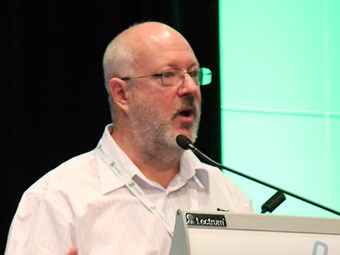
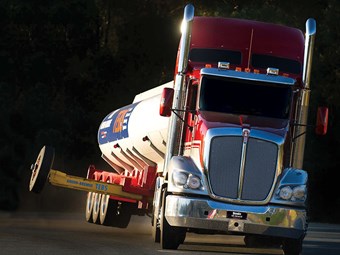
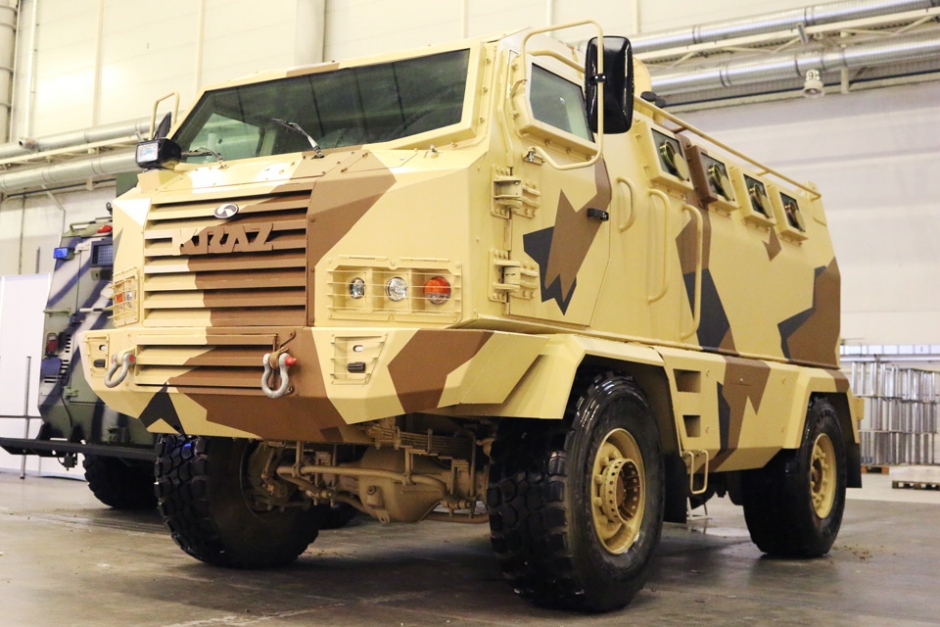

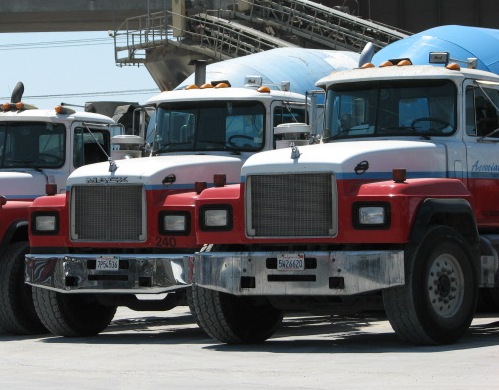

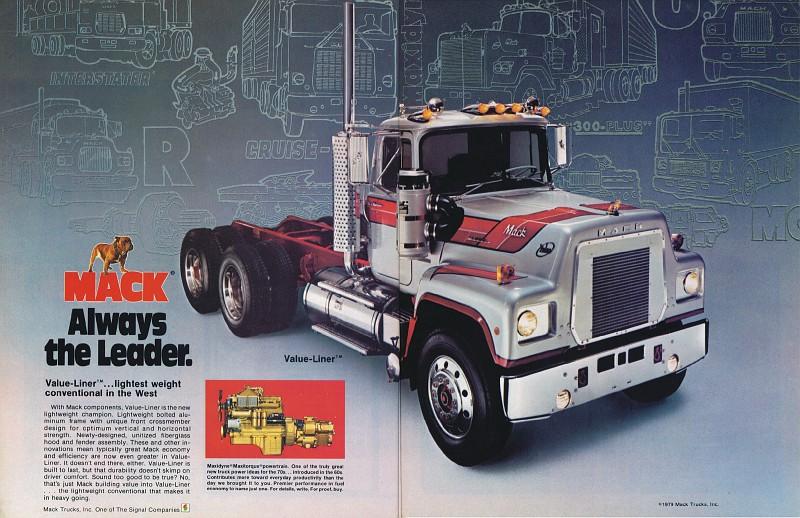
.thumb.jpg.7d9a3858e4311e7c338c769c4b09e2bd.jpg)
